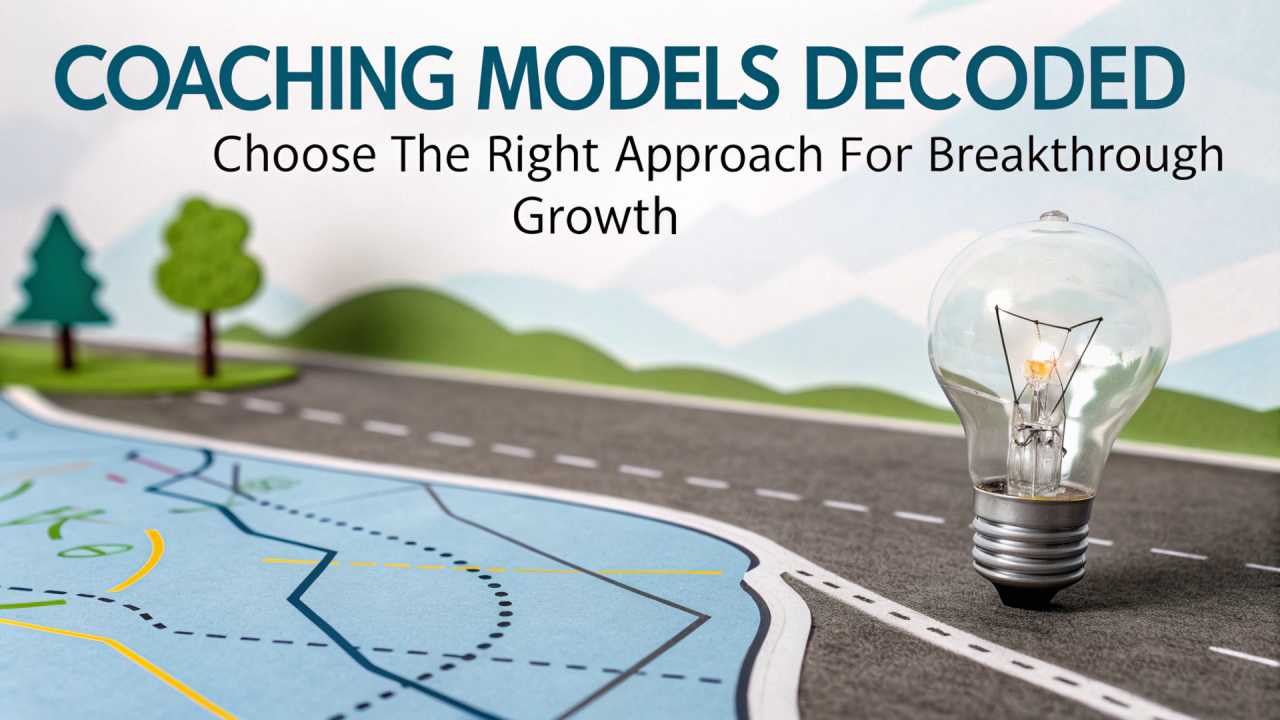The coaching industry is booming, projected to hit $7.3B by 2025 [1], but not all coaching delivers results. Whether you are investing in personal growth or leading corporate L&D, understanding coaching model categories is your cheat code to avoiding wasted time and money.
1. Goal-Oriented Models
What they do: Turn aspirations into step-by-step plans. Ideal for hitting targets, improving performance, or solving concrete problems.
Examples: GROW, FUEL, OSKAR, SMART. Best for:
- Sales teams needing to boost quotas
- New managers mastering delegation
- Short-term skill gaps (e.g., public speaking)
Limitations: Can feel robotic for emotional or systemic challenges.
Stats: 70% of coached employees report better work performance [2].
2. Transformational Models
What they do: Rewrite limiting beliefs and habits. Focuses on why you do what you do.
Examples: CLEAR, STEPPA, Hawkins’ Seven-Eyed Model.
Best for:
- Leaders stuck in outdated mindsets
- Career pivots requiring identity shifts
- Rebuilding trust in toxic teams
Limitations: Takes 6–12 months for lasting change.
Stats: 41% reduction in executive derailment after CLEAR coaching [3].
3. Solution-Focused Models
What they do: Amplify what is already working. Sparks quick wins and momentum.
Examples: OSKAR, Appreciative Inquiry, Solution Circles.
Best for:
- Burnout recovery
- Teams paralyzed by conflict
- Innovation roadblocks
Limitations: May miss root causes of recurring issues.
Stats: 37% higher retention in hybrid teams using these models [4].
4. Strengths-Based Models
What they do: Turn natural talents into superpowers.
Examples: CliftonStrengths, VIA Character, StrengthsFinder.
Best for:
- Quiet leaders undervalued in traditional settings
- High-potential identification
- Career stagnation
Limitations: Risks ignoring critical skill gaps.
Stats: 79% of Fortune 500 companies use strengths coaching [5].
5. Developmental Models
What they do: Upgrade how leaders think, not just what they do.
Examples: Vertical Development, Adult Stage Theory, Kegan’s Framework.
Best for:
- Executives navigating mergers
- Crisis leadership
- Ethical decision-making
Limitations: Requires years, not months.
Stats: Organizations that invest in vertical development see a 12% increase in overall leadership effectiveness and a 14% increase in leaders’ ability to manage complexity.
6. Process-Oriented Models
What they do: Focus on coaching session dynamics and adaptability.
Examples: CLEAR, AOR, MAP.
Best for:
- Clients needing flexibility and organic exploration
- Navigating ambiguous challenges
- Building trust in coaching relationships
Limitations: Less structured for goal-driven outcomes.
Stats: 21% of organizations prioritize adaptive leadership development [6].
7. Cognitive-Behavioral Models
What they do: Reshape unhelpful thought patterns using CBT principles.
Examples: STEPPA, Rational-emotional coaching, Cognitive Behavioral Coaching (CBC).
Best for:
- Overcoming self-doubt or anxiety
- Structured, short-term interventions
- Improving decision-making under stress
Limitations: Less effective for systemic or cultural issues.
Stats: 68% efficacy in reducing workplace stress [7].
Why It Matters for You
Match the model to your goal:
- “I need a promotion” → Goal-Oriented
- “I’m lost in my career” → Transformational
- “I want to lead through chaos” → Developmental
Mix categories: Use Goal-Oriented for frontline managers; Developmental for C-suite.
Audit your coaching portfolio: Are you using GROW for problems needing CLEAR’s depth?
The Future is Blended
Top coaches do not pick sides, they hybridize. Imagine:
- Strengths-Based + Solution-Focused for innovation teams
- Transformational + Developmental for CEO succession
Your Move: Which category does your current coach (or program) use? Tag someone who needs this framework.
References
1. Coaching Industry Market Size
3. Center for Creative Leadership
5. Clifton Strengths for organizations
6. Global Coaching Institute: Process-Oriented Coaching
7. Frontiers in Psychology, 2023
#CoachingModels #LeadershipDevelopment #TalentStrategy #CareerGrowth #FutureOfWork
Jaye Lee Oneness Consultancy & Academy
About the Author Vincent Wong PhD, is an ICF credentialed PCC coach and seasoned researcher. At @Oneness, he combines rigorous scientific inquiry with hands‑on experience to craft actionable frameworks that empower organizations and individuals to navigate today’s evolving challenges with clarity and confidence.


0 Comments